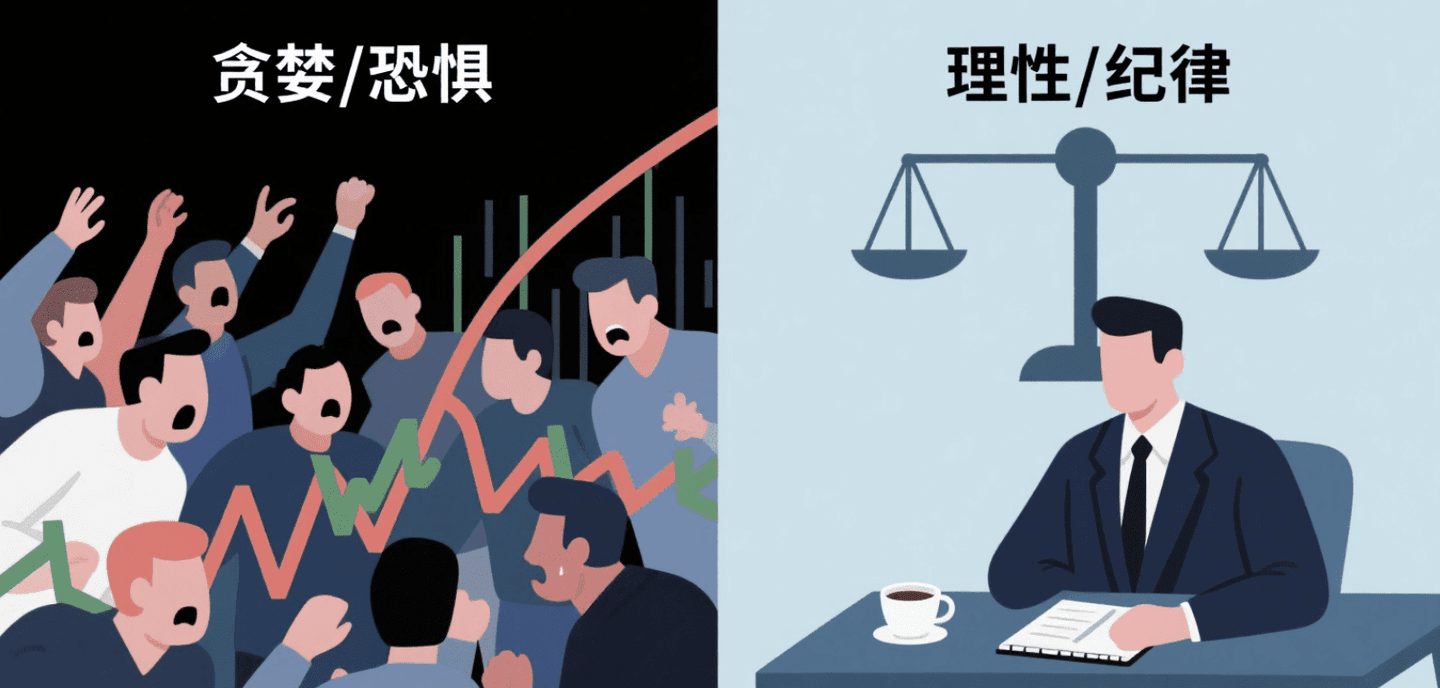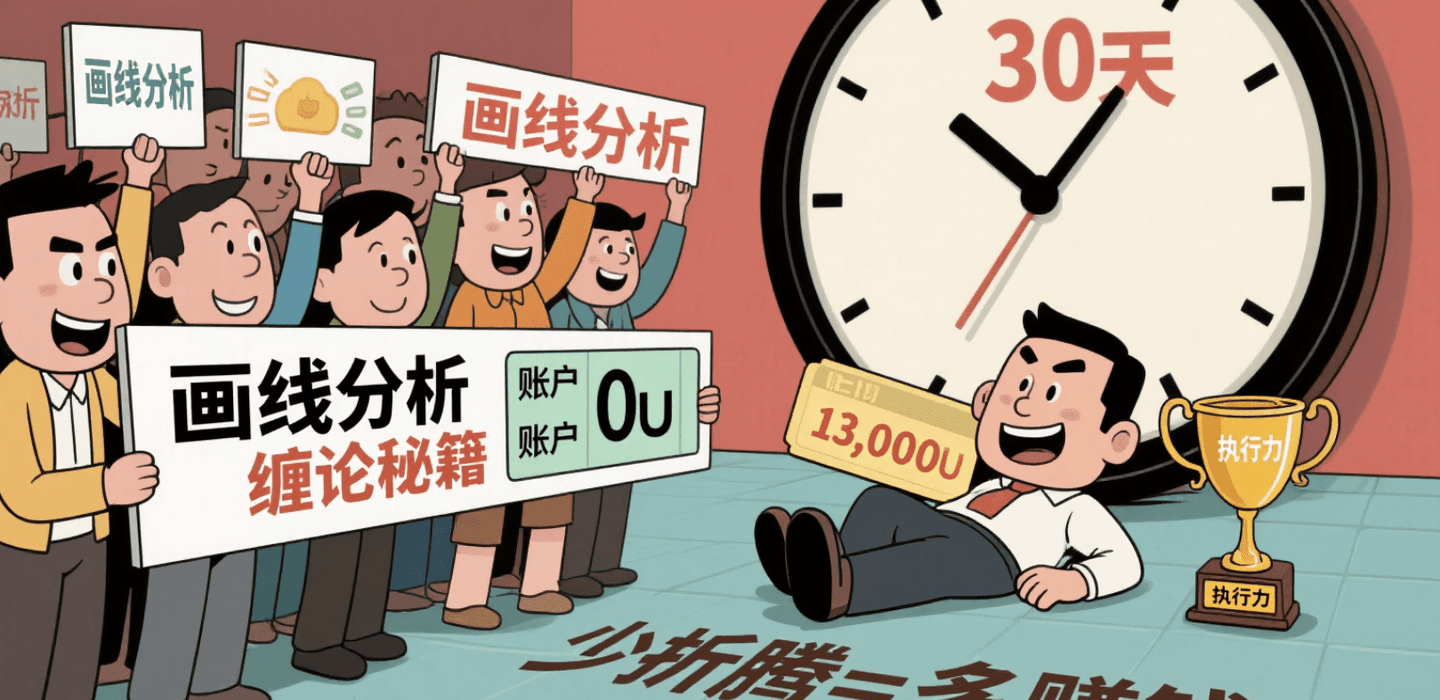Cryptocurrency world: a 'fair arena' for breaking class barriers.
In today's society, many industries seem to be influenced to varying degrees by family background and connections, with the phenomenon of 'relying on dad' being common. However, some say that the cryptocurrency world is an exception, the only industry that doesn’t require 'relying on dad'.
The cryptocurrency world may provide ordinary people with an opportunity to break free from class constraints, allowing them to compete without relying on their background. However, it is not a guaranteed paradise; only through continuous learning and improving awareness can one attempt to seize their own opportunities in this unique field! It can truly change classes!
Is the cryptocurrency world the only way out for the post-2000 generation, and is it an opportunity for a shortcut?
In this era full of uncertainty, the post-2000 generation is facing unprecedented employment and development pressures. Traditional industries are severely over-competitive, and the promotion channels are narrow, making it extremely difficult to achieve class leaps through dead-end wages. The cryptocurrency world, once seen as a 'flood beast', is gradually becoming a beacon of hope for many from the post-2000 generation.
In the current economic environment, the post-2000 generation faces the real pressure of high housing prices and high living costs as soon as they enter society. The traditional workplace's step-by-step approach makes it difficult for them to accumulate wealth quickly and achieve economic independence. The cryptocurrency world, as an emerging financial field, is full of opportunities and possibilities. It is not limited by traditional industry qualifications or backgrounds; as long as you have insight, courage, and a willingness to study, you have the opportunity to achieve considerable returns in a short time.
For the post-2000 generation, they are a generation that grew up with the internet, with a stronger ability to accept and learn new things. Concepts like blockchain technology and digital currency in the cryptocurrency world are not out of reach for them. They can adapt more quickly to the rules and rhythms of this field and seize the opportunities within.
Of course, the cryptocurrency world is also full of risks, but high risks often come with high rewards. In a situation where breakthroughs are difficult to achieve through traditional paths, the cryptocurrency world has become an important avenue for the post-2000 generation to change their fate. It offers the post-2000s an opportunity to strive for a future based solely on their abilities, without relying on background or qualifications.
So in the current reality, the cryptocurrency world is the only way out for the post-2000 generation. It is also an opportunity for a shortcut! It may be full of challenges, but it offers the post-2000s a possible path to break the norm and realize their self-worth.
After more than 10 years of trading cryptocurrencies, I have consistently used the trading strategy of (increasing positions with floating profits). This year, from May 2025, I earned more than 80,000 U from a 3,500 U account!

Many people rush to go all-in as soon as they see market trends; the result is either liquidation or getting cut.
Many people have not truly understood these four words:
Most people rush to close their positions as soon as they make a profit, fearing a profit reversal.
But the thinking of experts is exactly the opposite—
Use market money to increase positions, turning profits into new chips.
This is the true logic of compound interest.
My approach back then was very simple:
Step 1: Test with small positions, first get the direction right;
Step 2: After making a profit, do not rush to exit, but instead increase your position with the floating profit portion;
Step 3: Strictly set drawdown stop-loss points to ensure capital safety; losing only profits;
Step 4: Gradually increase positions to let profits snowball in the trend.
Thus, with a capital of 3,500 U, I followed the market trends and increased my positions step by step, eventually rolling it up to 80,000 U.
I have also stepped into pitfalls during this process; increasing positions with floating profits is not about adding randomly; the timing must be right.
It can still spit out profits.
The key is to add at the right moment and take profits when it's time.
Many people are still stuck in the mindset of 'taking a little profit and running'.
So the account can only make small trades.
To truly turn things around, one must learn to let the market's money help them make profits.
I share these not as a textbook but as experience gained from practice.
Remember, the market does not wait for people; seizing an opportunity can change your fate.

Contract leverage: survival rules every newbie must know
Leveraged trading is like a double-edged sword; used well, it can quickly amplify profits, but used poorly, it can instantly consume your capital.
For newbies entering the market, the sharpness of this sword often exceeds expectations.
Leverage is essentially borrowing money to amplify trading scale. For example, using 100 yuan in capital with 5x leverage allows for a 500 yuan trade. However, during market volatility, losses will also erode capital at a 5x rate.
Many people mistakenly believe that high leverage is a shortcut to wealth, but in reality, it leads into a risk trap—when the market fluctuates in the opposite direction and the margin is insufficient, the system will force liquidation, leaving no chance for a comeback.
To avoid being 'killed' by leverage, you must adhere to three iron rules:
1. Don’t be greedy with leverage
Newbies are advised to start with 1-3 times leverage to familiarize themselves with market volatility patterns. High leverage may seem exciting but actually amplifies human weaknesses: during market fluctuations, a 10x leverage can easily lead to a mental breakdown.
2. Position control is the lifeline
The capital invested in a single trade should not exceed 5%, and the total position should not exceed 30%. Even if a judgment error occurs, there will still be sufficient funds to cope with the subsequent market. Operating with a full position is equivalent to handing over your fate to the market; one mistake could wipe everything out.
3. Stop-loss lines must have 'hard indicators'
Be clear about your stop-loss point before entering the market; for example, if losses reach 2% of your capital, close your position immediately. Many people always fantasize that 'holding on a little longer will bring them back to breakeven,' but small losses can turn into liquidation. Remember: the market will not cater to your wishful thinking.
The core of leveraged trading is 'survival first'. Instead of pursuing short-term windfalls, treat each operation as a long-term investment.
When you can maintain calm with 5% position and 3x leverage during volatility, setting stop-losses, you have truly mastered this tool. After all, living longer allows for greater profits.
In the cryptocurrency world, earning 1 million, 'either rely on a bull market + hold on, or bet on a coin that will make you rich, or use high leverage to bet in the right direction.' But most people lose money, so don’t just look at the stories of getting rich; first think about how much risk you can bear.
If you are also a tech enthusiast in the cryptocurrency world, click to visit the homepage.
Tap on my avatar to follow me for first-hand information and in-depth analysis!

In cryptocurrency trading, the key indicators that the trading system must master: 7 trading numbers + 10 system capabilities, which determine the life and death of your account!

Trading is ultimately a numbers game. Here are seven key numbers and statistics that every serious trader needs to master. Some of these numbers can be derived from historical backtesting, some can be actively controlled by traders, and some are goals that need to be worked towards. Once traders understand these numbers and clarify their position within their trading systems through actual data, they come one step closer to success. Truly serious traders must calculate and master these key numbers based on quantitative data.
1. Win Rate
What proportion of your trades do you expect to be profitable?
Even if the win rate is below 50%, you can still be profitable as long as the amount earned from winning trades is greater than the amount lost from losing trades.
2. The longest possible consecutive losses
In the case of continuous losses, how many times do you expect to lose consecutively at most?
Most systems may experience a maximum of 10 consecutive losses in a year; can your current position management withstand such a losing streak?
3. The 'R' multiple / risk amount for each trade
What is the maximum amount you are willing to lose in each trade?
If you judge incorrectly, this is the amount you might lose. Can you psychologically and emotionally bear this loss?
4. The percentage of total capital risked in each trade (%)
If the trade fails, what percentage of your total account funds are you willing to lose in each trade?
Reasonable position control and stop-loss settings, controlling risk in each trade to 1%-2% of total capital, can prevent account 'liquidation'.
5. Risk/Reward Ratio
If the trade fails, how much might you lose? And if the trade succeeds, how much do you expect to earn?
A risk-reward ratio of 1:3 is very ideal; even with a win rate below 50%, it is still possible to achieve long-term profitability.
6. Maximum Expected Drawdown
What do you expect the maximum drawdown from the peak to be?
The smaller the drawdown, the less psychological pressure, and the easier it is to recover. Because a 20% account drawdown requires a 25% return to break even; a 50% account drawdown requires a 100% return to break even.
Therefore, avoiding significant drawdowns from the very beginning is crucial.
7. Expected Annualized Return Rate
What annualized return rate do you hope to achieve?
The higher the target, the greater the risk you need to bear, which also means you may experience larger drawdowns.
Remember: the best capital managers in the world achieve an annualized return of only about 20% over the long term; while the most outstanding traders in history, in their best years, have an average annual return of about 50%-60%. Having a clear profit target is instructive for your trading strategy.
By quantifying these key parameters, you can truly build an achievable successful trading system.

Ten capabilities your trading system must possess
Here are ten core functions that a qualified trading system must possess:
◎ Surpass the market's buy-and-hold strategy
Your system must outperform the market's buy-and-hold strategy in terms of return or smaller drawdowns. If a system cannot even beat the market itself, there is no point in active trading.
◎ Establish a diversified observation list
Create a diversified observation asset pool to obtain more trading signals and seize trend opportunities.
◎ Adapt to all market conditions
Your system must be able to perform stably in volatile, rising, and falling markets (achieving large profits, small profits, or small losses), rather than only being profitable in specific market conditions.
◎ Verify potential profit space through backtesting
System signals must be validated through historical backtesting for their potential profitability.
◎ The structure of big profits and small losses
The system must be able to keep the profit space open while controlling losses to an acceptable range.
◎ Eliminate 'liquidation' risk
By correctly controlling positions and arranging win rates, avoid triggering a catastrophic drawdown of funds (for example, a 50% drawdown is considered 'liquidation' since it requires a 100% return to break even).
◎ Built-in capital management and position adjustment mechanism
The system must include rules for position control to limit maximum drawdowns.
◎ Able to withstand extreme market shocks
Can your system withstand extreme market events such as the Great Depression of 1929, Black Monday in 1987, or the financial crisis of 2008?
◎ Sufficient market liquidity
Does the market you are trading have enough transaction volume to allow you to enter and exit at the required position without suffering significant bid-ask spread losses?
◎ Suitable for your personality and risk tolerance
The trading system that suits you best is one that matches your personality and risk preference, and that you can stick to for the long term.
Building a successful trading system is not based on feelings, fantasies, or luck, but on a framework that is quantifiable, verifiable, and executable over the long term.

In contracts, I have always advocated a 'simple method'.
Many people lose money not because they can't read the market, but because they are too clever: studying a bunch of indicators, frequent operations, staying up late to watch the market, and as a result, they break down mentally and their accounts don't grow.
Those who can go far are often those who simplify their methods to the extreme.
My own approach:
✅ Keep only one indicator
EMA21 + EMA55 is enough. The crossover of short-term and mid-term trends is the signal. Golden cross is bullish, death cross is bearish; don’t add unnecessary complexity.
✅ Choose the right entry position
Only look at the four-hour chart. EMA21 crossing EMA55 + a bullish candlestick = go long.
Conversely, a downward cross + a bearish candlestick = go short. Absolutely do not touch the middle position during volatility.
✅ Stop-loss must be included
Place it at the high and low points of the previous four-hour candlestick; single losses should not exceed 5% of capital. Losses are acceptable, but never hold a losing position.
✅ Profits should be rolled over
Initial position 5% of funds, add after a 5% profit, continue to add as profits increase, always following the trend until EMA crosses again. This way, you can protect profits while trying to capture the trend.
⚡ Mindset Rules:
Don't pursue winning on every trade; it's better to miss than to make a mistake.
1-2 trades a day; don’t disrupt the rhythm because of impatience.
Trust the system, stick to execution, and long-term compound interest will naturally come.
The so-called 'simple method' does not mean not using your brain, but rather simplifying the complex market into a few rules that can be adhered to.
It is suitable for those who do not want to overexert themselves or be bound by emotions, and can keep the win rate consistently high.
In the cryptocurrency world, earning 1 million, 'either rely on a bull market + hold on, or bet on a coin that will make you rich, or use high leverage to bet in the right direction.' But most people lose money, so don’t just look at the stories of getting rich; first think about how much risk you can bear.
If you are also a tech enthusiast in the cryptocurrency world, click to visit the homepage.
Tap on my avatar to follow me for first-hand information and in-depth analysis!
